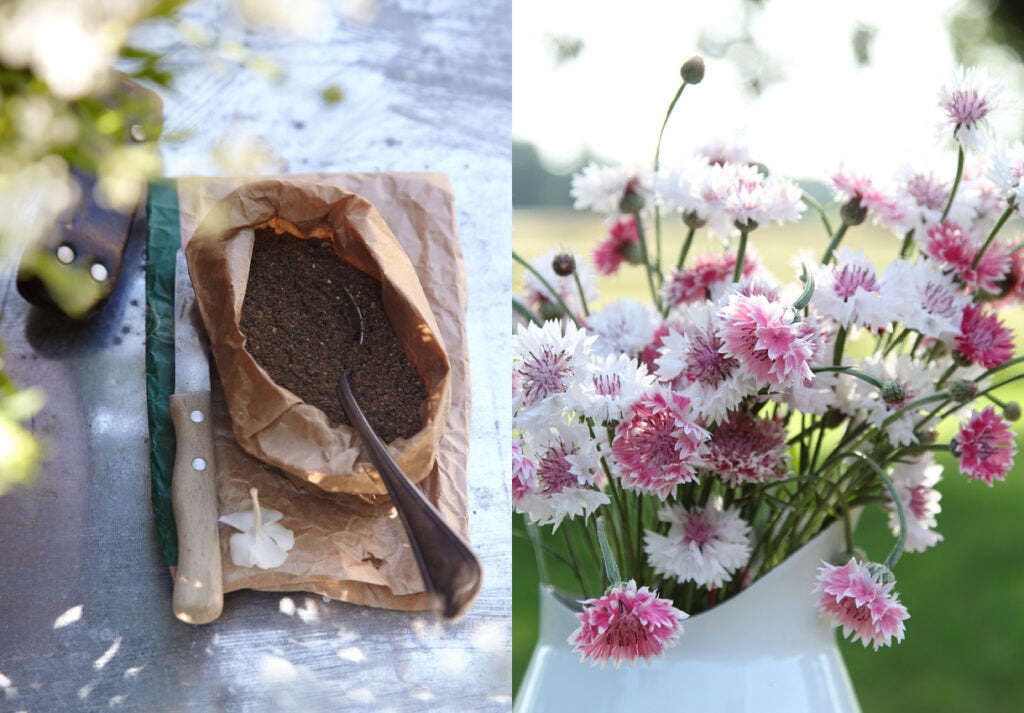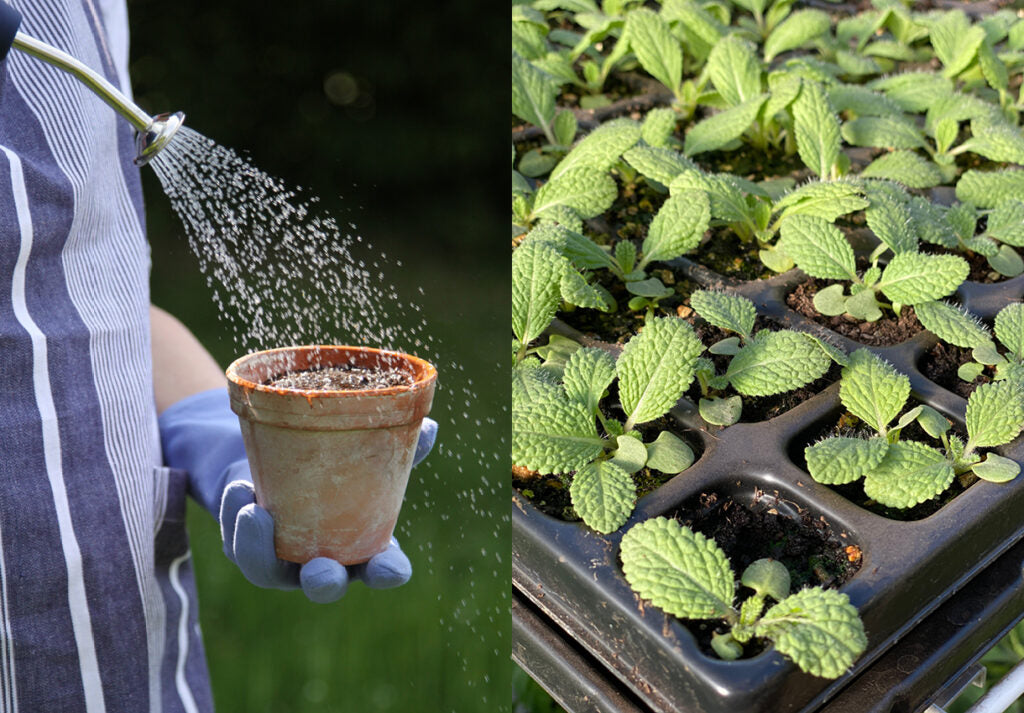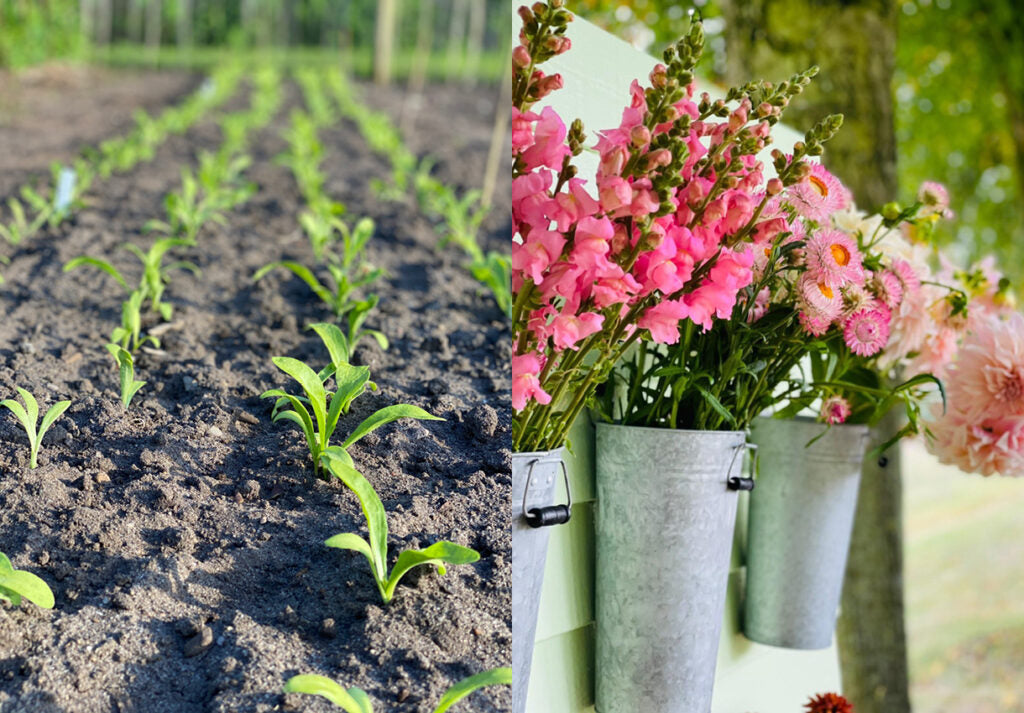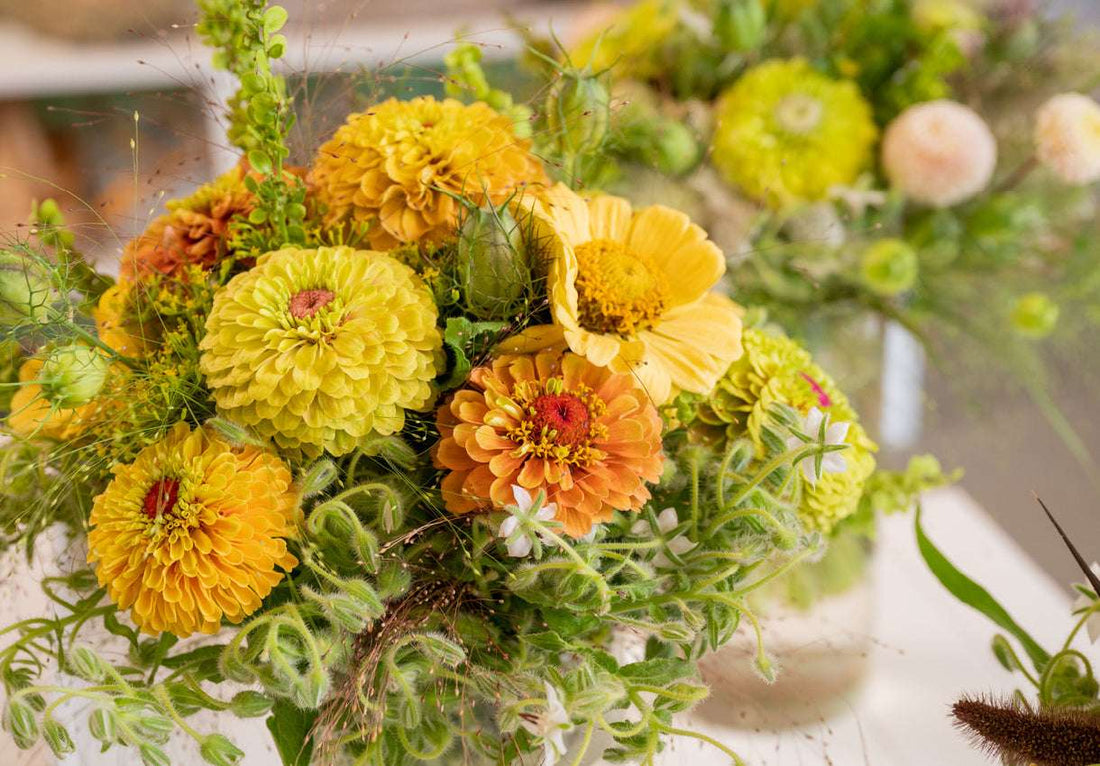This is how the cut flower garden works
What could be more beautiful than cutting a fresh bouquet of flowers in your own garden? To encourage you to keep cutting flowers, it's a good idea to create a small cut flower garden or a bed just for cut flowers. Urban gardeners can also fill a bed or one or more planters with annuals.

A garden full of flowers
Summer flowers are simply perfect for a cut flower garden. The great thing about them is that you can completely redesign your garden every year. While some varieties will self-seed and appear elsewhere in the garden, they essentially need to be re-seeded every year. In addition to summer flowers, dahlias, bulbs, and shrubs like hydrangeas or snowberries can also be cultivated in a cut flower garden: They make a wonderful addition to colorful bouquets. A clear advantage of many annual summer flowers and dahlias: the more often you cut them, the more blooms they produce.
Basics for the cut flower garden
As with all flowers, the first thing to do is choose the right location. The sunnier and warmer it is, the better, as more flowers will bloom thanks to the plenty of sun. It's also best to choose a corner sheltered from the wind so the flowers don't die too quickly. The bed should be easily accessible from all sides and ideally no wider than 120 cm so that the flowers can be easily reached from all sides. Tall plants are best placed in the middle of the bed or at the back so that they don't shade the shorter plants. Almost more important, however, is the soil, or rather, good peat-free seed compost. The soil, for example, coco compost, should be loose, well-drained, and weed-free so that the delicate roots of the plants can find a firm hold and grow well. If the soil is clay, be sure to add sand and compost!

This is how the seeds are sown
The most important instructions for sowing, such as spacing and sowing depth, are usually found on the seed packets. The sowing location should also be bright, as young plants need plenty of light to thrive. The seed compost is spread evenly in a greenhouse, small pots, or even better, in multi-pot trays and lightly pressed down to eliminate any voids and create a level surface. The seeds are then allowed to trickle directly from the packet onto the well-moistened soil or spread by hand. The flower seeds are then sieved with soil: the smaller the seeds, the thinner the substrate layer should be. For dark-germinating plants such as lupins or zinnias, for example, a layer of about half a centimeter is sufficient. Light-germinating plants such as dill, bluebells, or foxglove, on the other hand, are sown on top of the soil and not covered with soil again.
The soil is then lightly pressed down with a soil stamp or a board. A sprayer or rubber bulb sprayer can be used to keep the soil moist for the next sowing without washing away the seeds. Tip: For direct sowing, the seeds can be mixed with a little sand. This allows them to be better distributed over the soil and prevent them from being sown too densely. If you are cultivating multiple varieties of seed, it's worth using labels. Not only can you write the variety name on them, but also the sowing date on the back.

The right time
So-called coolflowers, or hardy annuals such as lady's mantle, annual delphiniums, wild carrots, scabious, or coneflowers, which require a cold stimulus, are sown in August or September of the previous year, or can be sown in small pots as early as the end of February. The young plants can then be planted in the garden bed at the end of March or beginning of April, or they can also be sown directly. Some varieties, such as lady's mantle or poppies, are best sown directly in the garden bed, as they don't tolerate transplanting very well.
As the saying goes, anticipation is the greatest joy. This also applies to sowing! With frost-sensitive summer flowers, it's important not to sow too early, as the plants need at least twelve hours of light immediately after germination. And unfortunately, depending on the region, this isn't until around March 20th. Before then, cultivation would only succeed with artificial light. Therefore, you shouldn't start sowing the remaining annual summer flowers until mid-March. These, too, are sown indoors first. Only after the Ice Saints in mid-May, when the danger of frost has passed, can they be planted in frost-free ground.

Now it's time to harvest
Then you need to water lightly every day and change the position of the pots or multi-pot trays every 3 to 4 days, as the plants always stretch towards the sun. Starting about four weeks after germination, fertilize lightly every two weeks (with liquid fertilizer in the watering water) to increase the abundance of flowers and wait until the first flowers have formed for cutting. Some varieties need some support in the form of nets for the flowers to grow into or stakes to which the flowers can be tied. Planted closely together, however, they often support each other and only a few weeds can grow between the plants. Anyone who has sown Coolflowers can probably start harvesting in May/June. If all goes well, the cut flower garden will be in bloom from June until autumn, and fresh bouquets can be picked every day, but please avoid the midday heat. It is best to always cut the stems of Zinnias, for example, just above a pair of leaves. The plant will then branch out again and form new flowers. Dead flowers should be pruned regularly, all lower leaves should be removed immediately upon harvest, and the flowers should be immediately placed in clean water. After harvesting, it's helpful to let the flowers stand in water for a while in a cool place. This allows them to recover from the pruning and will last longer in the vase.
Best seeds
While beginners are best off starting with dill, cornflowers, cosmos, or zinnias, sweet peas, for example, are something for more advanced gardeners. Annual flowers that are sown only for cutting, such as baby's breath, stocks, or summer flowers, also require some experience, as they must be reseeded regularly. You'll find a huge selection of seeds here in our Garden Magic online shop. Not only do we lovingly hand-pack the seeds in our beautifully designed and beautifully illustrated seed packets, we also cultivate the flowers ourselves in the fields of our Bissenbrook flower farm. From columbines to zinnias, we're guaranteed to have many stunning flower varieties to suit every taste and every garden style.
Text: Victoria Wegner







































































































